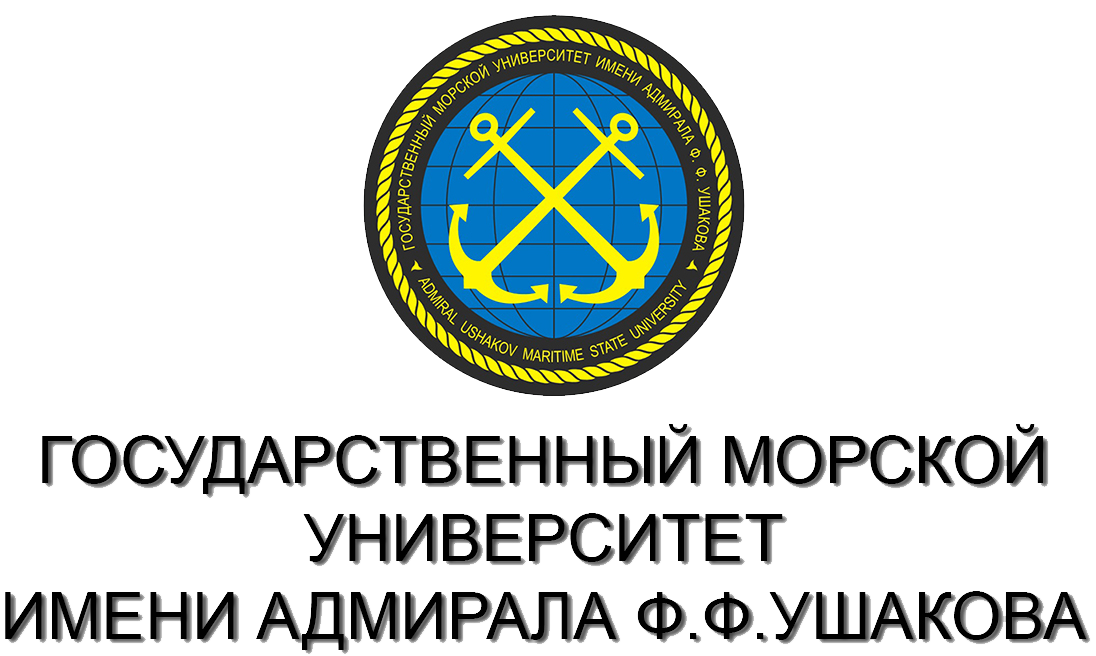The most common configuration of the propeller-rudder complex, consisting of a fixed-pitch propeller and a rudder blade, significantly limits the ability to control the vessel at a low oncoming flow speed and requires the use of additional controls. The need to ensure the safety of navigation, when making a maneuver in confined waters or at a low speed of the vessel, requires the use of limit angles of deflection of the steering surface. Achieving the limit angles of deviation of the steering p lane, in turn, leads to the flow sep aration and a relative decrease in the turning moment. The deterioration of the flow conditions around the rudder blade leads to a significant limitation of the vessel’s speed and, as a result, a change in the mode of operation of the main engine. The increased unevenness of the flow running on the elements of the hydromechanical complex, observed when the ship is making a maneuver, leads to a change in the characteristics of the propeller-steering complex Consequently, it significantly affects the propeller characteristic of the main engine. The paper analyzes the conditions of the flow around the elements of the propeller-steering complex with increased unevenness of the oncoming flow, which is typical for a maneuvering vessel. As a source of qualitative data on the effect of vessel maneuver on the characteristics of the hydromechanical complex, the results of acceptance tests of vessels and their propulsion sy stems were used. The rudder blade was chosen as the object of control action on the hydromechanical complex Numerical modeling and computational determination of the hydrodynamic characteristics of the rudder blade at small and limiting angles of deflection, estimation of the parameters of additionally supplied water to the profiled part of the rudder plane in order to control the boundary layer were performed. Increasing the hydrodynamic characteristics of the rudder blade by creating additional lift helps to limit the possible overload ofthe main engine by reducing the angle of the rudder plane. The positive effect obtained both at low speeds and at the design modes of the vessel’s movement contributes to the improvement of seaworthiness and the reduction of the influence of the uneven flow. The results of evaluating the operating modes of the main engine confirm the possibility of limiting the heaviness of the screw characteristic by improving the hydrodynamic properties of the rudder blade. Further directions aimed at investigation of the vessel's hydromechanical complex and the ranges of possible changes in parameters when using jet control systems for the flow around the rudder are determined.
ship’s hydromechanical complex, main engine, power curves, maneuver, boundary layer control system, propeller-rudder complex, rudder foil, steering plane, hydrodynamic characteristics
1. Basic Principles of Ship Propulsion. Url: https: //marineman-es.com/propeller-aft-ship //(data obrascheniya 01.12.2021).
2. Orlov, E. I. Standartizaciya v otrasli sudovogo, teplovoznogo i promyshlennogo dvigatelestroeniya /E.I. Orlov, A.P. Petrov,E.E. Zhivlyuk // Vestnik gosudarstvennogo universiteta morskogo i rechnogo flota im. admirala S.O. Makarova. -2016. - №4 (38). - S. 138 - 156. DOI:https://doi.org/10.21821/2309-5180-2016-8-4-138-156
3. Osovskiy, D.I. Povyshenie gidrodinamicheskih har akteristik per a ru lya su dna s ispol'zovaniem sistemy upravleniya pogranichnym sloem / D.I. Osovskiy, A.S. Sharatov, A.N. Gorbenko, S.H. Shmelev // Ekspluataciya morskogo transporta. - 2021. - №1(98). - S. 78-88. DOIhttps://doi.org/10.34046/aumsuomt98/13.
4. Sasaki, N., Kuribayashi, S., & Atlar, M. (2018, April). Gate Rudder®. In Proceedings of the 3rd International Symposium on Naval Architecture and M aritime (INT -NAM), Istanbul, Turkey. Pp. 24-25.
5. Shen, Y. T., Jiang Ch. W., Kenneth R. D. Twisted Rudder for Reduced Cavitation. J Ship Res. 1997. Vol. 44. Pp. 260-272.
6. Jialun, L., Quadvlieg F., Hekkenberg, R. Impacts of the rudder profile on manoeuvring performance of ships. 2016. Vol. 124. Pp. 226-240.
7. Ibragimov, O.E., Primenenie struynoy mehanizacii dlya povysheniya manevrennosti sudov/ O.E. Ibragimov, D. I. Osovskiy // Rybnoe hozyaystvo Ukrainy. - 2011. - №5. - S. 45-47.
8. Kacman, F.M. Konstruirovanie vinto-rulevyh kompleksov morskih su dov /F. M. Kacman, E.M. Kudrevatyy. - L.: Sudostroenie, 1974. - 376s.
9. Gavrilov, V.V. Kriterii ocenki proektnyh resheniy po sudovomu propul'sivnomu kompleksu /V.V. Gavrilov,Yu. V. Labzin // Trudy Krylovskogo gosudarstvennogo nauchnogo centra. -2021. -№51.-S. 45-47.
10. Dityatev, S. G. Issledovanie izmeneniy vintovoy harakteristiki sudovogo malooborotnogo dizelya v ekspluatacii: dis.. kand. tehn. nauk: 05.08.05 / Dityatev Sergey Germanovich. - L.: LVIMU im. adm. S. O. Makarova, 1984. -295s.
11. Rukovodstvo po opredeleniyu manevrennyh harakteristik sudov, Rossiyskiy morskoy registr sudohodstva, 2005. - 16s.
12. Raschet manevrennosti i provedenie naturnyh manevrennyh ispytaniy sudov vnutrennego i smeshannogo plavaniya, 2004. - 38s.
13. Pechnikov, A.N. Tendencii energosberezheniya v sovremennom sudostroenii /A.N. Pechnikov, D.T. Temiryaev// Ekspluataciya morskogo transporta. -2014. -№ 1(73). - S. 33 - 37.
14. Cherepanov, B. E. Sudovye vspomogatel'nye i promyslovye mehanizmy, sistemy i ih ekspluataciya / B.E. Cherpanov. - M.: Agropromizdat. -1986,- 283 s.
15. Roh, MI., Lee KY. Examples of Ship Design Model. In: Computational Ship Design. Springer, Singapore. 2018. Pp. 347-353. https://doi.org/10.1007/978-981-10-4885-2_17
16. Sharatov, A. S. Ocenka vliyaniya manevra krug' notonnazhnogo tankera na vintovuyu harakteristiku malooborotnogo dvigatelya // Morskzh tehnologii: problemy i resheniya-2021. -2014. -S. 89-92.
17. Sharatov, A. S. Proverka gipotezy dopolnitel'nogo struynogo vozdeystviya vody, podavaemoy cherez schelevuyu nasadku na lopasti grebnogo vinta // Ekspluataciya morskogo transporta. -2019. - №1. - S. 67-76.
18. Korol', Yu. M. Vliyanie lopastnyh i profil'nyh harakteristik na gidrodinamicheskuyu effektivnost' grebnyh vintov / Yu. M. Korol', O. N. Kornelyuk // Nauka i progress transporta. Vestnik Dnepropetrovskogo nacional'nogo universiteta zheleznodorozhnogo transporta. -2017.-№4(70).-S. 80-88.
19. Sertifikaciya Flowvision Url:http://www.tesis.com.ru/software/flowvision/ (data obrascheniya 01.02.2022).
20. Sharatov, A. S. Osobennosti realizacii dopolnitel'nogo struynogo vozdeystviya vody na lopasti grebnogo vinta fiksirovannogo shaga // Vestnik Astrahanskogo gosudarstvennogo tehnicheskogo universiteta. Seriya: Morskaya tehnika i tehnologiya. - 2019. - №1. - S. 53-62. DOI: https://doi.org/10.24143/2073-1574-2021-2-32-42
21. Bazhankin, Yu. V. Analiz vzaimodeystviya grebnogo vinta s rulevym organom sudna// Nauchnye problemy vodnogo transporta. - 2011. - №29. - S.11-15.
22. Kacman, F. M. Ekspluataciya propul'sivnogo kompleksa morskogo sudna/F. M.Kacman. -M.: Transport, 1987. -222s.











